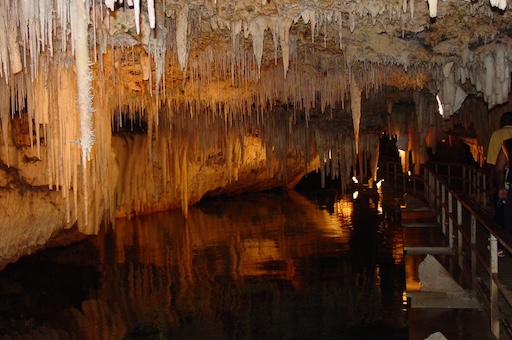
Imagine walking into a cavern where the walls are lined with towering crystals, some as tall as a giraffe, others stretching longer than a city bus. Their translucent spires shimmer like frozen moonlight, jutting out in every direction. It looks like a fantasy scene from a science fiction epic — but it’s real. Hidden deep beneath the earth in northern Mexico lies one of nature’s strangest masterpieces: the Cueva de los Cristales, or Cave of the Crystals.
Discovered by chance in the year 2000 by miners drilling through the Naica Mine, this hidden chamber contains the largest natural crystals ever found on Earth — massive blades of selenite that took half a million years to grow. But here’s the twist: it’s too dangerous for ordinary humans to visit. Temperatures inside can soar to 58°C (136°F), with humidity reaching 90–99%. Stay too long, and you’ll quite literally melt.
A Lost World Underground
The cave sits about 300 meters (nearly 1,000 feet) below the surface, inside a lead and silver mine in the Chihuahuan Desert. For decades, the Naica Mine was just another industrial operation — until workers broke through a rock wall and stumbled upon something surreal. A glittering cathedral of crystals, undisturbed, untouched, and absolutely alien.
The largest crystal found here is over 12 meters long (almost 40 feet), more than 4 meters wide, and weighs an estimated 55 tons. These aren’t delicate little shards — they are monoliths. And because of their scale and density, scientists had to invent entirely new methods to study and photograph them without damaging the cave — or dying from the heat.
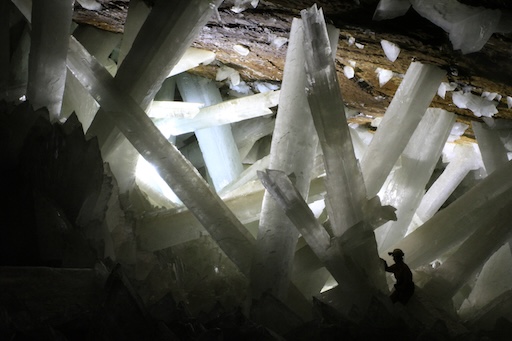
The Science of Heat and Beauty
So how did these giant crystals form? It’s a story of geology, water, and time. For hundreds of thousands of years, the chamber was filled with mineral-rich groundwater heated by a nearby magma chamber. This hot water, saturated with calcium and sulfate, slowly allowed the growth of selenite crystals — a transparent form of gypsum.
Unlike most caves, which form through erosion or lava, Cueva de los Cristales is essentially a giant pressure cooker for crystals. The water stayed at a near-constant 58°C, creating the perfect environment for slow, massive crystal growth. It’s believed the chamber remained sealed and submerged for over 500,000 years before the mining operation accidentally drained the water — revealing the hidden marvel inside.
A Deadly Beauty
Visiting this cave isn’t like strolling through a museum. The environment inside is so hostile that even experienced spelunkers can only spend 5–10 minutes inside without protection. Temperatures exceed human survivability. Air is thin. The humidity is near 100%. And the crystals themselves are razor-sharp and fragile.
To explore the cave, scientists must wear custom “ice suits” — fully cooled suits with oxygen tanks and internal refrigeration systems. It’s like spacewalking, but underground. Even with all this gear, researchers must take shifts, rest in cooling chambers, and plan every movement with surgical precision.
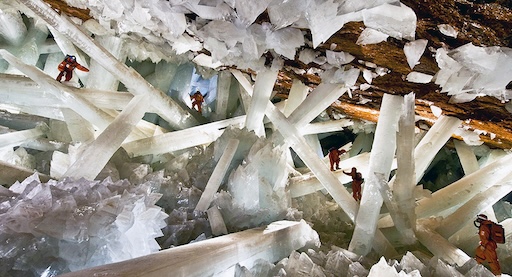
A Place Few Will Ever See
Today, Cueva de los Cristales is sealed to the public. It’s not a tourist attraction. The danger is too great, and even the smallest contamination could threaten the delicate microclimate that preserved the crystals for millennia. The cave has been re-flooded to help protect it, and access is limited to select scientific teams.
And yet, the photos and footage that exist are enough to ignite the imagination. There are moments when the cave glows with a soft white light, and the crystals catch reflections like living glass. It feels more like something born in the heart of a star than beneath the soil of Mexico. For many, even just seeing the images is enough to whisper: “This planet still has secrets.”
Why This Place Matters
Beyond the visual wonder, the Cave of Crystals is a reminder of how fragile and rare Earth’s natural phenomena can be. We often think of nature as forests, mountains, rivers. But here — in the stifling dark, under the pressure of stone and time — beauty grows in slow silence, undisturbed for eons.
It also reminds us of the limits of human exploration. Despite all our technology and curiosity, there are still places we cannot linger, only observe. Places where we are not in control — where the Earth sets the rules.
A Hidden Wonder That Stays Hidden
Cueva de los Cristales may never be a place you can visit. There are no gift shops or guided tours. But maybe that’s part of its magic. Like the bottom of the ocean or the rings of Saturn, it exists in a realm beyond reach — a sacred anomaly carved by time.
And in a world where almost everything feels accessible, clickable, explorable — maybe it’s comforting to know that deep beneath a mountain in Chihuahua, a glittering cathedral still slumbers in the heat, waiting for the right conditions to grow a little more wonder.
Share this story and inspire others.
Tags: Cueva de los Cristales, Naica Crystal Cave, Giant crystals Mexico, selenite cave, Naica Chihuahua, hidden wonders, underground caves
 La Danza del Venado – The Sacred Deer Dance of the Yaqui People
La Danza del Venado – The Sacred Deer Dance of the Yaqui People
 Tarahumara Rarámuri – The Ultramarathon Runners of the Sierra
Tarahumara Rarámuri – The Ultramarathon Runners of the Sierra
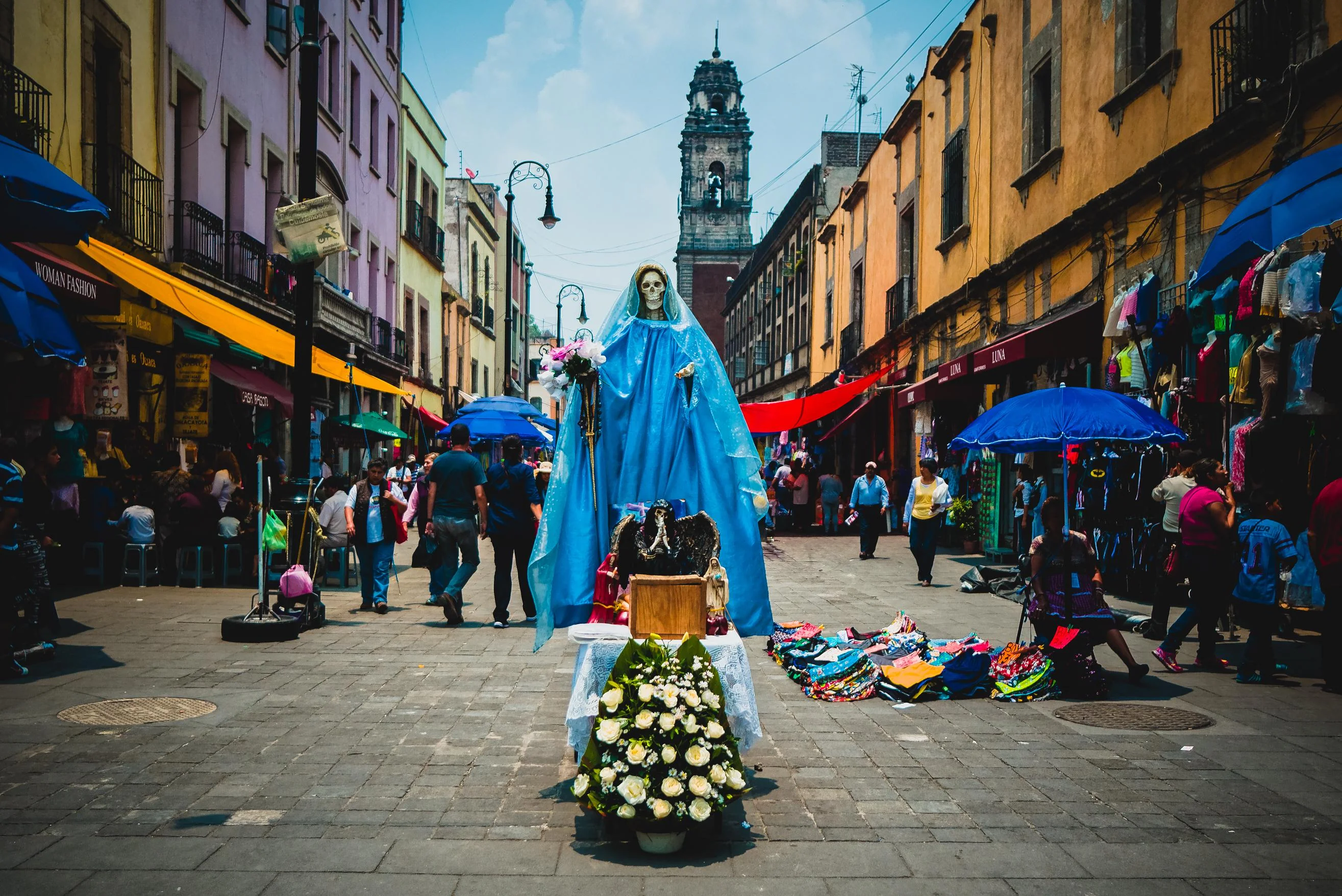 La Santa Muerte – The Controversial Saint of Death
La Santa Muerte – The Controversial Saint of Death
 Xantolo – The Huasteca’s Version of Day of the Dead with Masks and Dances
Xantolo – The Huasteca’s Version of Day of the Dead with Masks and Dances
 Voladores de Papantla – Men Who Fly from Poles
Voladores de Papantla – Men Who Fly from Poles
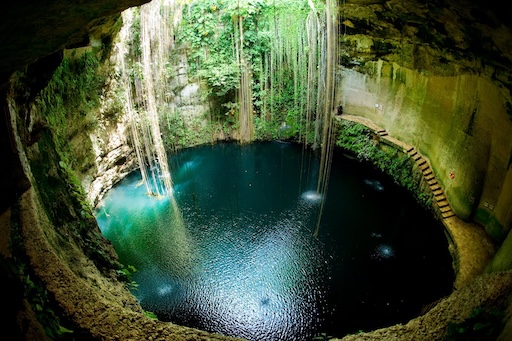 Cenote Sagrado – Sacred Sinkhole of the Maya
Cenote Sagrado – Sacred Sinkhole of the Maya